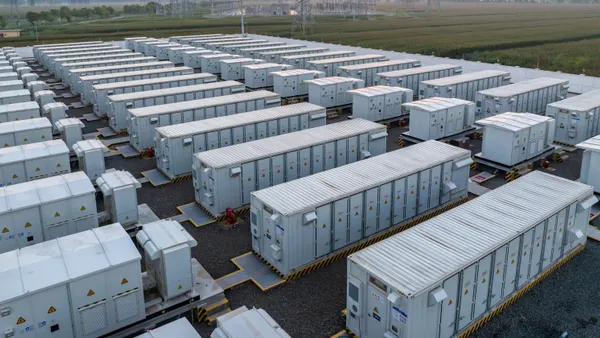Dive Brief:
- The U.S. Department of Energy’s Oak Ridge National Laboratory (ORNL) is licensing battery technologies to energy storage startup Sparkz to reduce the amount of cobalt used in lithium-ion batteries and to increase the density of batteries — two advancements that potentially have major implications for the batteries used to power electric vehicles as well as store energy from the grid.
- One of the licensed technologies focuses on cathodes that do not contain cobalt, a material that has attracted controversy in the battery supply chain due to safety issues, limited supply and the labor conditions in the places where it is mined.
- Another technology licensed by ORNL is aimed at overcoming existing limitations on energy density — the amount of charge stored by a material — in order to make electric vehicles charge much more efficiently, a goal that also could aid energy storage used in grid applications.
Dive Insight:
Sparkz, launched in 2019, is described by founder Sanjiv Malhotra as “a stealth-mode company developing electro-chemical energy storage technology.” Malhotra was previously director of the Energy Investor Center at the DOE. The company hopes to scale the technologies it is licensing from ORNL in an R&D and prototyping facility at a yet-to-be-determined location, according to a statement from ORNL.
Cobalt is commonly-used in the positively-charged end of a battery, known as the cathode. Developing cobalt-free cathodes is a major priority for the energy storage industry, with a number of companies such as SimpliPhi working to remove cobalt from the lithium-ion battery supply chain. Tesla CEO Elon Musk has said that he wants the amount of cobalt used in the company’s EVs down to “almost nothing” amid reports that cobalt is primarily sourced from mines in the Democratic Republic of Congo that use child labor.
“Moving forward to an electrified world with millions of electric cars, cobalt is not sustainable,” Ilias Belharouak, a group leader in ORNL’s Energy and Transportation Science Division, said in the statement.
Cobalt-free batteries have found use in niche applications. One battery designer, Lithium Werks, has targeted the marine market, including batteries used in vessels like cruise ships, by focusing on the safety features of batteries that do not include cobalt.
Another of the licensed technologies is ORNL’s battery design that seeks to significantly increase energy density compared to existing batteries. “Fast-charging, energy dense batteries developed by ORNL and scaled by Sparkz could allow electric charging stations to take over as the ‘gas stations of the future,’” the ORNL statement said.
Improving energy density is especially important for batteries used in electric vehicles, where the ability to hold charges for extended periods of time is a major selling point. “Density has long been the watchword for electric vehicle batteries as every kWh you can squeeze into a kg of weight stretches the tether to charging infrastructure and pushes back on range anxiety concerns,” Wood Mackenzie head of energy storage Daniel Finn-Foley said in an email to Utility Dive.
Higher battery energy density also has an impact on lithium-ion batteries used for the electric grid, although not quite as direct as the effect on electric vehicles. “Density is also a key cost reduction priority for EV manufacturers, and as most lithium-ion manufacturing is driven by the larger EV industry, the density benefits will trickle through to the stationary storage industry,” Finn-Foley said.











